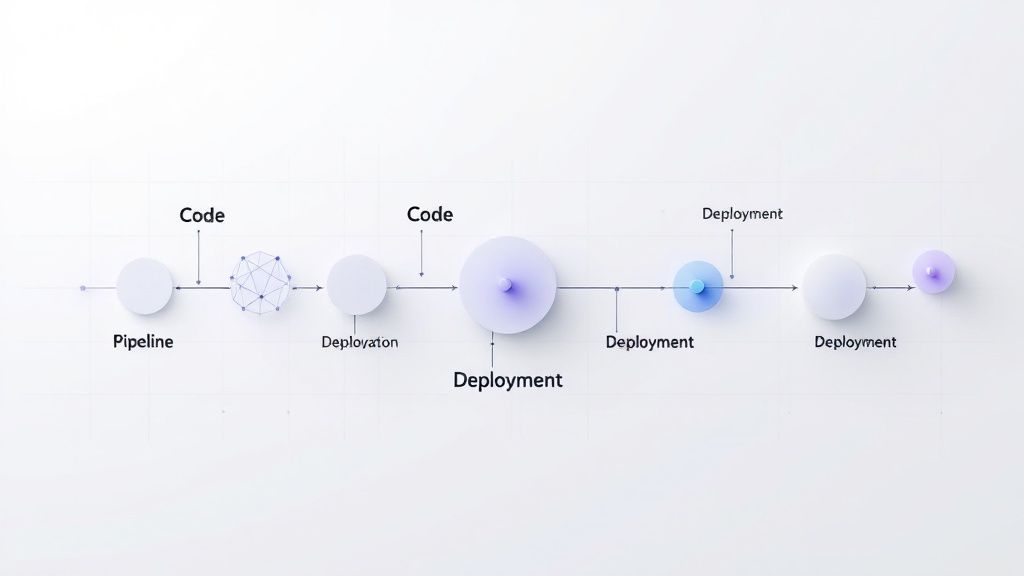Improve code quality and development speed with these essential unit testing best practices. Learn how to write effective unit tests, integrate them into your workflow, and leverage tools for maximum impact.

Unit testing is a core practice in software development. It involves testing individual components of an application in isolation to confirm they function correctly. This proactive approach is vital because identifying bugs early significantly reduces the cost and time needed to fix them later. This makes unit testing not just a best practice, but an essential part of creating reliable and robust software. In this post, we’ll explore practical unit testing techniques that can improve your code quality. We’ll cover everything from writing effective tests to integrating them into a continuous integration pipeline.
Effective unit testing relies on following established best practices. One key practice is writing concise, focused tests. Think of your code as a machine with many parts. Each unit test examines a single part in isolation, ensuring it works correctly before integrating it into the larger mechanism. This approach makes tests easier to understand, debug, and update. The FIRST principles—Fast, Independent, Repeatable, Self-Validating, and Thorough—further enhance test quality. For instance, fast tests enable frequent running, offering quick feedback during development, while independent tests prevent one test’s outcome from affecting others, improving result reliability. These principles form the foundation of strong unit testing strategies.
Another crucial best practice is using realistic test data. This involves testing with real-world scenarios and edge cases to thoroughly validate the unit’s functionality. Imagine a function that calculates discounts. Testing it with only positive values wouldn’t reveal potential problems with zero or negative inputs. Using a variety of test data ensures the code performs correctly in diverse situations. Moreover, techniques like mocking and stubbing allow isolating the unit from its dependencies. This isolation helps in targeting testing efforts and simplifies the process of finding and fixing bugs, making the entire system more robust.

Building on these core principles, the structure and organization of your tests are essential for their long-term effectiveness and ease of maintenance. Just as a well-organized toolbox makes finding the right tool easy, a well-structured test suite simplifies navigation and understanding. This is key for smoothly integrating unit testing best practices into your development workflow. A clear structure makes it easy to grasp each test’s purpose, enabling more effective debugging and quicker problem identification.
A fundamental aspect of test organization is using descriptive names. While it might seem minor, deciphering tests named “test1” or “checkValue” quickly becomes a problem. Clear test names, like testLoginWithValidCredentials or testLoginWithInvalidPassword for a login function, immediately convey the test’s purpose. This clarity improves readability and maintainability. Descriptive names also help in quickly locating failing tests and understanding the specific functionality needing attention. This is crucial for collaboration and long-term project health.
Beyond naming, structuring each test logically is equally important. The “Arrange, Act, Assert” (AAA) pattern provides a useful framework. This pattern separates the test into three parts: arranging the preconditions (like input data), acting on the unit under test (calling the function), and asserting the expected results (checking return values). Like a well-written recipe, this structure makes the test easy to follow. This separation simplifies debugging. For instance, a failing assert step points to a problem with the function’s output, not its setup. This clarity is especially valuable in complex tests.
Organizing tests into logical groups enhances clarity, especially in larger test suites. Consider a class with multiple methods. Grouping tests by method or functionality improves navigation. This is similar to organizing files into folders—creating order instead of chaos. For example, all form validation tests could reside in a FormValidationTests group. This makes running specific test subsets easier, facilitating focused testing. It also helps identify gaps in coverage. Seeing areas without test groups highlights potential weaknesses, allowing you to prioritize writing more tests, aligning with best practices. This organization transforms the test suite into a valuable tool for understanding the codebase and promotes efficient development.
Beyond structure and organization, writing effective test cases is the next crucial element of best practices. Each test case should be precise and focused, like a surgical instrument, designed for a specific purpose. This precision ensures tests accurately pinpoint potential problems, contributing to a reliable codebase. This section explores the core principles for creating effective tests, offering guidance on maximizing their impact and ensuring maintainability.
The FIRST principles, as mentioned earlier, provide a robust framework and should guide your test case writing. These principles—Fast, Independent, Repeatable, Self-Validating, and Thorough—help you create both effective and efficient tests. For example, fast tests enable frequent execution during development, offering quick feedback and allowing for faster iterations. This rapid feedback loop is vital for catching errors early.
Test independence is paramount for accuracy. Each test should be self-contained, not depending on others. This isolation, like controlled scientific experiments, removes external variables and confirms that results reflect the unit’s behavior. This practice simplifies identifying the source of a failing test. Interdependent tests can create cascading failures, obscuring the root cause.
Repeatability is essential. A well-written test should produce consistent results every time, regardless of the environment. This consistency builds trust in the test suite. Inconsistent results make a test unreliable, diminishing its value as a quality indicator. This reliability comes from removing external dependencies and ensuring consistent test setup.
Self-validation is crucial for test automation. Tests should automatically determine pass/fail status without manual intervention. This automation is key for integrating tests into continuous integration pipelines, enabling quick feedback on code changes. Manual validation introduces human error and slows development. Self-validation ensures consistent and objective evaluation.
While thorough testing is important, balance it with practicality. 100% code coverage is often ideal but not always achievable or necessary. Prioritize testing critical paths, edge cases, and complex areas. This focused approach maximizes the testing effort’s impact by targeting the most vulnerable code sections. By applying these principles, developers can build a comprehensive test suite that guards against bugs and elevates software quality.

Comprehensive test coverage is a vital part of unit testing best practices. This doesn’t always mean 100% coverage but rather strategically focusing on the most crucial and vulnerable parts of your code. Like a security system, you want to protect the most valuable assets and entry points. This section explores the nuances of test coverage and its effective use to enhance software quality and reliability.
Various metrics measure test coverage, each offering a different perspective. Used in conjunction with best practices, these metrics reveal potential gaps in your testing strategy.
While high coverage is desirable, prioritization is key. Focusing on critical paths, complex logic, and error-prone areas provides the best return on investment. Consider these guidelines:
Moving beyond test cases and coverage, another important aspect of unit testing best practices involves managing dependencies. Imagine testing a complex component reliant on external services, databases, or other modules. Directly using these dependencies during tests creates overhead, slows down testing, and makes tests brittle. This is where mocking and stubbing are useful. These techniques isolate the unit under test by simulating its dependencies, enabling more focused and efficient testing.
Mocking and stubbing are test doubles—stand-ins for real dependencies—but their purposes differ slightly. Consider them specialized actors in a play. A stub provides pre-canned responses, like an actor reading lines. This controls the test environment and ensures predictable outcomes. A mock not only provides canned responses but also verifies that specific interactions with the dependency occur, like a director checking actor performance and line delivery.
For example, when testing an email-sending function, you wouldn’t want to send actual emails during each test. A stub can simulate sending and return a success message. If you need to verify correct email formatting and proper service calls, you would use a mock.
Using mocks and stubs offers several advantages:
Many languages offer frameworks that simplify creating and managing mocks and stubs. These frameworks usually provide intuitive APIs for defining mock behavior, verifying interactions, and managing test doubles. Java developers often use Mockito and JMock, while Python developers use unittest.mock.
The choice depends on the test scenario. Use a stub to control dependency behavior without verifying interactions. Use a mock to verify specific interactions between the unit and its dependencies. The decision often depends on the required level of test detail. By incorporating these techniques, you can enhance the quality and effectiveness of your unit tests, contributing to reliable and robust software.

Integrating unit tests into a Continuous Integration/Continuous Delivery (CI/CD) pipeline is a major step towards a robust development process. Automating test execution within the pipeline greatly improves code quality and accelerates release cycles, amplifying the benefits of unit testing best practices. This section will explore how CI integration streamlines your workflow and elevates software quality.
Continuous Integration centers around frequently integrating code changes into a shared repository. Each integration triggers an automated build, including running unit tests. Every commit triggers the entire test suite, providing immediate feedback on the changes’ impact. If a new feature breaks existing functionality, the tests flag the issue immediately, preventing faulty code from progressing. This early detection significantly reduces the time and cost of later bug fixes.
Effective CI implementation requires choosing the right tools for your team’s workflow and technology. Popular choices include Jenkins, a versatile open-source automation server; GitHub Actions, which integrates seamlessly with GitHub repositories; and Azure Pipelines, a comprehensive CI/CD platform within Microsoft Azure DevOps. This variety allows customizing the integration to your specific requirements.
Integrating unit tests involves configuring the build process to execute tests automatically. This usually means adding a build step that runs the tests after compilation. The CI system then reports the results, indicating success or failure. This clear visibility is crucial for identifying regressions and ensuring that only code passing all tests moves to later pipeline stages.
CI integration offers key advantages: